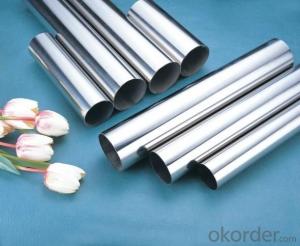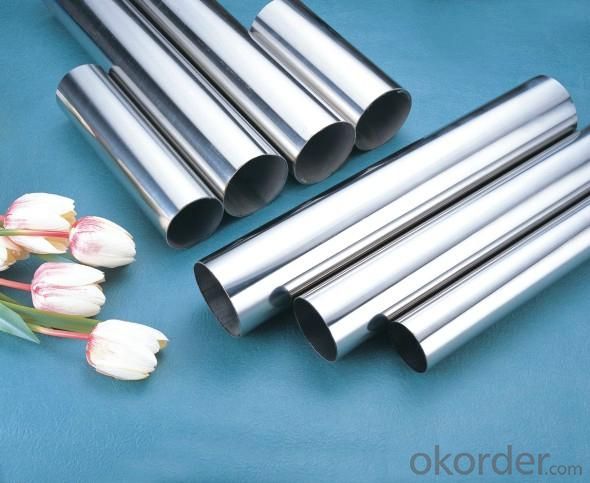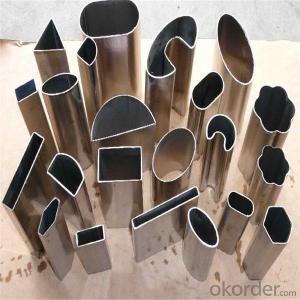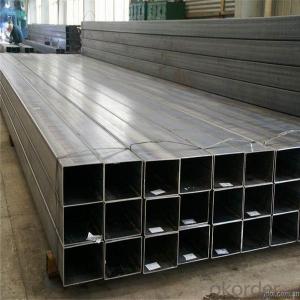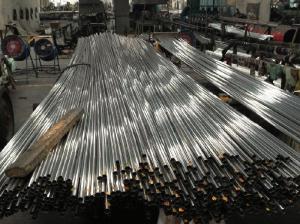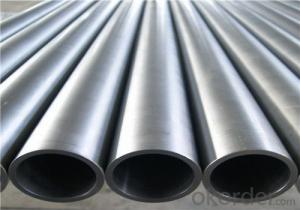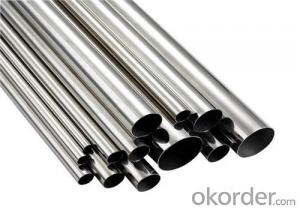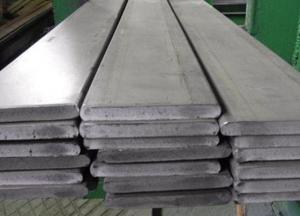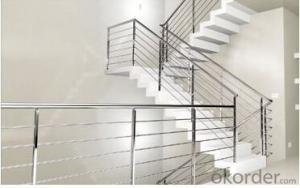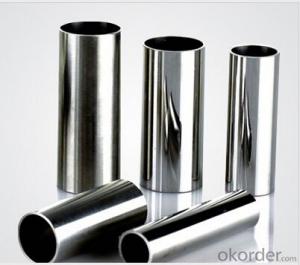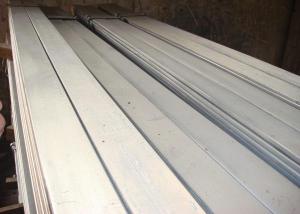stainless steel pipe/tube 304pipe,stainless steel weld pipe/tube,201pipe,stainless steel profile
- Loading Port:
- Tianjin
- Payment Terms:
- TT OR LC
- Min Order Qty:
- 25 m.t.
- Supply Capability:
- 1000 m.t./month
OKorder Service Pledge
OKorder Financial Service
You Might Also Like
Quick Details
| Place of Origin: | China (Mainland) |
Packaging & Delivery
| Packaging Detail: | stainless steel pipe/tube ,304pipe,stainless steel weld pipe/tube, stainless steel welded pipe/tube ,201pipe,stainless steel profile |
| Delivery Detail: | 20days |
Specifications
stainless steel pipe/tube 304pipe,stainless steel weld pipe/tube,201pipe,stainless steel profile
Standard ASTM A554, A249, A26
Standard | ASTM A554, A249, A269 and A270, A312 | |||||
Material Grade | 201 ( Ni 0.8%), 202 (Ni 3.5%~4.5%), 301(Ni 5%) 304 (Ni 8%, Cr 18%), 316 (Ni 10%, Cr 18%), 316L (Ni10%~14%), 430 | |||||
Outer Diameter | 6mm--159mm | |||||
Thickness | 0.3mm - 3.0mm | |||||
Length | 6m or as customers' request | |||||
Tolerance | a) Outer Diameter: +/- 0.2mm | |||||
b) Thickness: +/- 0.02mm | ||||||
c) Length: +/- 5mm | ||||||
Surface | 180G, 320G, 400G Satin / Hairline 400G, 500G, 600G or 800G Mirror finish | |||||
Application | Decoration construction, upholstery, industry instrument | |||||
Test | Squash test, extended test, water pressure test, crystal rot test, heat treatment, NDT | |||||
Chemical Composition of Material | Material
Composition | 201 | 202 | 304 | 316 | 430 |
C | ≤0.15 | ≤0.15 | ≤0.08 | ≤0.08 | ≤0.12 | |
Si | ≤1.00 | ≤1.00 | ≤1.00 | ≤1.00 | ≤1.00 | |
Mn | 5.5-7.5 | 7.5-10 | ≤2.00 | ≤2.00 | ≤1.00 | |
P | ≤0.06 | ≤0.06 | ≤0.045 | ≤0.045 | ≤0.040 | |
S | ≤0.03 | ≤0.03 | ≤0.030 | ≤0.030 | ≤0.030 | |
Cr | 16-18 | 17-19 | 18-20 | 16-18 | 16-18 | |
N | 3.5-5.5 | 4-6 | 8-10.5 | 10-14 | ||
Mo | 2.0-3.0 | |||||
Mechanical Property | Material Item | 201 | 202 | 304 | 316 | |
Tensile Strength | ≥535 | ≥520 | ≥520 | ≥520 | ||
Yield Strength | ≥245 | ≥205 | ≥205 | ≥205 | ||
Extension | ≥30% | ≥30% | ≥35% | ≥35% | ||
Hardness (HV) | <253 | <253 | <200 | <200 | ||
Payment | Payment by T/T, 30% as advance payment and 70% balance pay before shipping. |
Delivery time | A.7 days if this goods is stock goods. B.30 days if this goods will be produced after order |
Validity | Valid time is 3 days for price usually. |
stainless steel pipe/tube ,304pipe,stainless steel weld pipe/tube, stainless steel welded pipe/tube ,201pipe,stainless steel profile
- Q: Can stainless steel pipes be used in the renewable energy industry?
- Yes, stainless steel pipes can be used in the renewable energy industry. Stainless steel is corrosion-resistant, durable, and able to withstand high temperatures and pressures, making it suitable for various applications in renewable energy systems such as solar thermal, geothermal, and biomass. It is commonly used for transporting fluids, gases, and steam in these systems, ensuring reliable and efficient energy production.
- Q: Can stainless steel pipes handle extreme weather conditions?
- Yes, stainless steel pipes are known for their excellent durability and resistance to extreme weather conditions. They can withstand high temperatures, heavy rains, strong winds, and even harsh chemicals without corroding or deteriorating. The inherent properties of stainless steel, such as its high strength, corrosion resistance, and heat resistance, make it an ideal choice for outdoor applications and extreme weather conditions. Stainless steel pipes can handle extreme heat and cold, as well as resist the effects of UV radiation and oxidation. These pipes are often used in industries such as oil and gas, chemical processing, construction, and marine applications, where they are subjected to harsh environments. Overall, stainless steel pipes are a reliable and long-lasting solution for handling extreme weather conditions.
- Q: Can stainless steel pipes be used for structural purposes?
- Certainly, structural purposes can indeed employ stainless steel pipes. Stainless steel, renowned for its strength, durability, and resistance to corrosion, proves to be an exceptional substance for structural uses. Found commonly in industries like construction, architecture, and engineering, stainless steel pipes serve as structural support and facilitate the conveyance of fluids and gases. They possess the capability to endure heavy loads, extreme temperatures, and even harsh environmental circumstances, rendering them fitting for an extensive array of structural applications. Furthermore, stainless steel pipes offer customization options through various grades, sizes, and thicknesses, enabling them to cater to specific structural prerequisites.
- Q: Can stainless steel pipes be used for chemical processing?
- Indeed, chemical processing can indeed utilize stainless steel pipes. One must acknowledge stainless steel's remarkable ability to resist corrosion, rendering it an apt material for handling a diverse range of chemicals. It effectively wards off both organic and inorganic substances, including acids, bases, and salts. Moreover, stainless steel pipes exhibit commendable strength, durability, and resistance to extreme temperatures, enabling them to endure the often severe conditions prevalent in chemical processing. In addition, their ease of maintenance and cleaning renders them a favored choice within the industry. Nevertheless, it remains crucial to carefully consider the specific requirements of the chemicals involved and seek counsel from experts to select the most suitable grade of stainless steel, ensuring optimal performance and safety.
- Q: What is the difference between Type 409 and Type 410 stainless steel pipes?
- Type 409 and Type 410 stainless steel pipes exhibit distinct characteristics and are used for different purposes. Type 409 stainless steel is a ferritic variant containing less chromium than Type 410. It is mainly composed of iron, carbon, and up to 11% chromium. This composition grants Type 409 stainless steel adequate resistance to corrosion in low-oxygen environments and moderate resistance to pitting and crevice corrosion. It finds common usage in applications where high-temperature oxidation resistance is unnecessary, such as automotive exhaust systems, catalytic converter shells, and heat exchangers. On the contrary, Type 410 stainless steel is a martensitic variant with a higher chromium content (around 11-13%) and a small amount of nickel. This composition endows Type 410 stainless steel with exceptional corrosion resistance and favorable mechanical properties. It is a versatile stainless steel that can be subjected to heat treatment to achieve elevated strength and hardness. Type 410 stainless steel is frequently employed in applications requiring corrosion resistance and/or wear resistance, including cutlery, surgical instruments, valves, and pump parts. To summarize, the primary distinction between Type 409 and Type 410 stainless steel pipes lies in their composition and resulting properties. Type 409 stainless steel is a ferritic variant with good corrosion resistance in low-oxygen environments, whereas Type 410 stainless steel is a martensitic variant with excellent corrosion resistance, heightened strength, and hardness. The choice between these two types of stainless steel pipes depends on the specific requirements of the application and the desired properties necessary for its success.
- Q: What is the difference between 347 and 316 stainless steel pipes?
- The main difference between 347 and 316 stainless steel pipes lies in their composition and intended use. 347 stainless steel pipes contain a higher percentage of niobium, which gives it improved high-temperature stability and resistance to sensitization. This makes it ideal for applications where the pipes will be exposed to high temperatures, such as in heat exchangers, furnace parts, and chemical processing equipment. The addition of niobium also enhances the resistance to intergranular corrosion. On the other hand, 316 stainless steel pipes are composed of molybdenum, which provides increased resistance to corrosion and pitting. This makes it suitable for applications involving exposure to harsh chemicals, saltwater, and other corrosive environments. It is commonly used in industries such as marine, pharmaceutical, and food processing. In terms of mechanical properties, both grades have excellent strength and corrosion resistance. However, due to the higher nickel content in 347 stainless steel, it is generally more expensive than 316 stainless steel. Overall, the choice between 347 and 316 stainless steel pipes depends on the specific requirements of the application. If high-temperature stability and resistance to sensitization are crucial, 347 stainless steel pipes would be the preferred choice. If corrosion resistance is the primary concern, especially in harsh environments, 316 stainless steel pipes would be more suitable.
- Q: Can stainless steel pipes be used for solar thermal systems?
- Yes, stainless steel pipes can be used for solar thermal systems. Stainless steel is highly corrosion resistant and can withstand the high temperatures and pressures typically found in solar thermal systems. It is a reliable and durable choice for transporting the heat transfer fluid in these systems.
- Q: What is the difference between 304J7 and 316J7 stainless steel pipes?
- The composition and properties are what distinguish 304J7 and 316J7 stainless steel pipes. 304J7 is a member of the 304 series, which is well-known for its strong resistance to corrosion and durability. It contains approximately 18-20% chromium and 8-10% nickel, contributing to its corrosion resistance and making it suitable for various applications, such as plumbing, food processing, and chemical industries. In contrast, 316J7 stainless steel belongs to the 316 series, a higher grade compared to 304. It has a higher chromium content (16-18%), nickel content (10-14%), and also includes molybdenum (2-3%). The addition of molybdenum further enhances its corrosion resistance, particularly against chlorides and other aggressive environments. As a result, 316J7 stainless steel pipes are ideal for applications in marine environments, coastal areas, and chemical processing plants. Regarding mechanical properties, 316J7 stainless steel pipes generally exhibit higher tensile strength and creep resistance than 304J7. This makes them more suitable for applications with high pressure and temperature. Moreover, due to their superior corrosion resistance and enhanced properties, 316J7 stainless steel pipes are often considered more expensive than 304J7. However, specific pricing can vary depending on market conditions and other factors. In conclusion, while both 304J7 and 316J7 stainless steel pipes offer good corrosion resistance, 316J7 is a higher grade with superior resistance to chlorides and aggressive environments. The choice between the two depends on specific application requirements, budget, and environmental factors.
- Q: Can stainless steel pipes be used in marine environments?
- Yes, stainless steel pipes can be used in marine environments. Stainless steel is highly resistant to corrosion and can withstand the harsh conditions present in marine environments, such as saltwater, humidity, and exposure to various chemicals. This makes stainless steel pipes a suitable choice for applications in marine industries, including shipbuilding, offshore platforms, and other marine structures.
- Q: How do stainless steel pipes perform in extreme weather conditions?
- Stainless steel pipes are known for their excellent performance and durability in extreme weather conditions. Due to their unique composition, stainless steel pipes have a high resistance to corrosion, making them ideal for use in various environments, including extreme weather conditions. In extremely cold weather, stainless steel pipes retain their strength and flexibility, unlike other materials that may become brittle or crack. This makes them suitable for applications such as oil and gas pipelines, where they can withstand low temperatures without compromising their performance. Similarly, in extremely hot weather, stainless steel pipes exhibit excellent heat resistance, preventing them from warping or deforming. This quality is crucial in industries like power generation, where high-temperature environments are common. Furthermore, stainless steel pipes have a high melting point, enabling them to maintain their structural integrity even in the presence of intense heat. This makes them resistant to fire damage, making them a safe choice for applications that require fire protection. Stainless steel pipes also have exceptional resistance to UV radiation, which can be damaging over time. This property ensures that the pipes do not degrade or weaken when exposed to direct sunlight or extreme weather conditions, making them suitable for outdoor applications. Additionally, stainless steel pipes have excellent mechanical properties, including high tensile strength and impact resistance. These qualities allow them to withstand extreme weather conditions such as high winds, heavy storms, and seismic activities without undergoing structural failures. In conclusion, stainless steel pipes are highly reliable and perform exceptionally well in extreme weather conditions. Their resistance to corrosion, high and low temperatures, UV radiation, and mechanical stress makes them a preferred choice for various industries, ensuring reliable and long-lasting performance even in the harshest environments.
Send your message to us
stainless steel pipe/tube 304pipe,stainless steel weld pipe/tube,201pipe,stainless steel profile
- Loading Port:
- Tianjin
- Payment Terms:
- TT OR LC
- Min Order Qty:
- 25 m.t.
- Supply Capability:
- 1000 m.t./month
OKorder Service Pledge
OKorder Financial Service
Similar products
Hot products
Hot Searches
Related keywords
